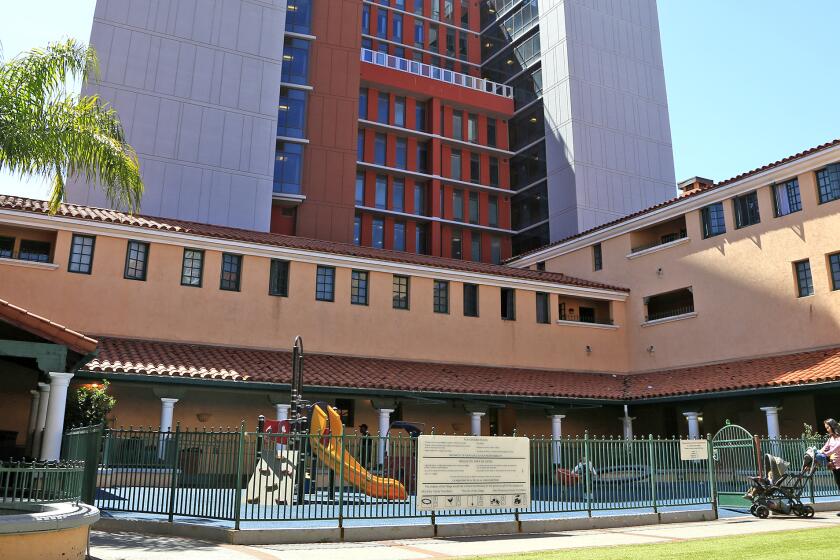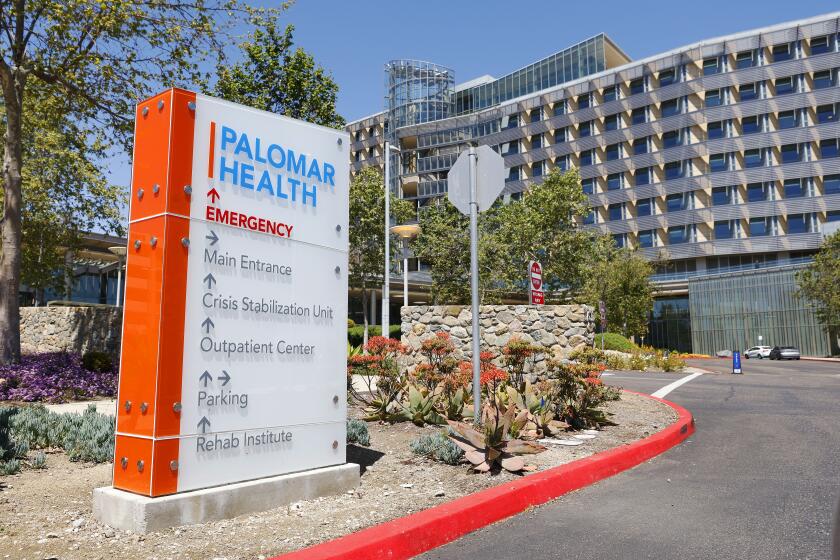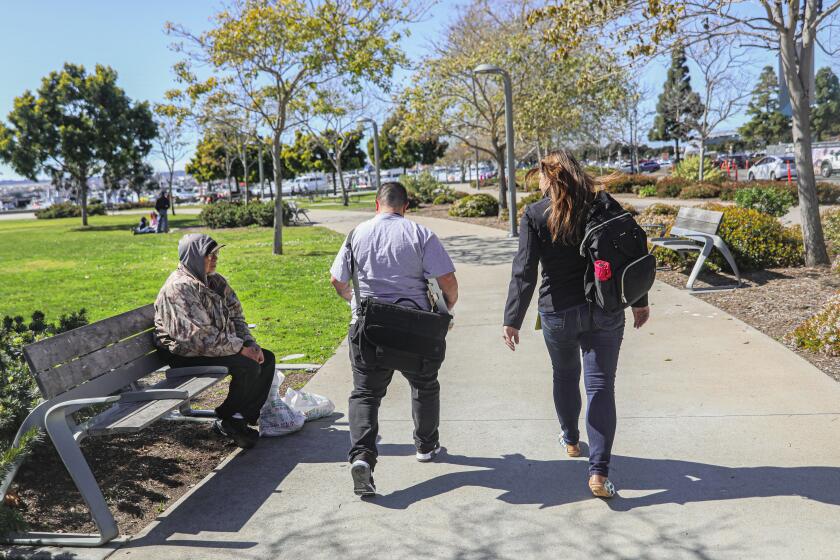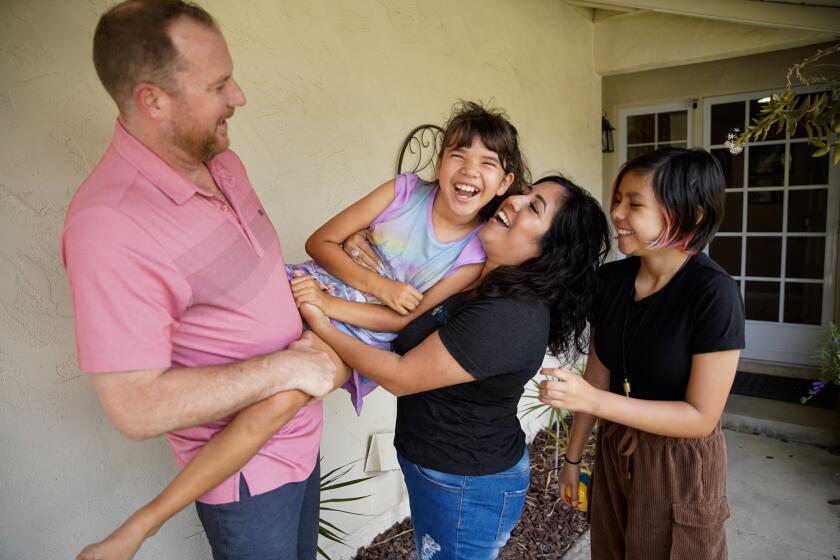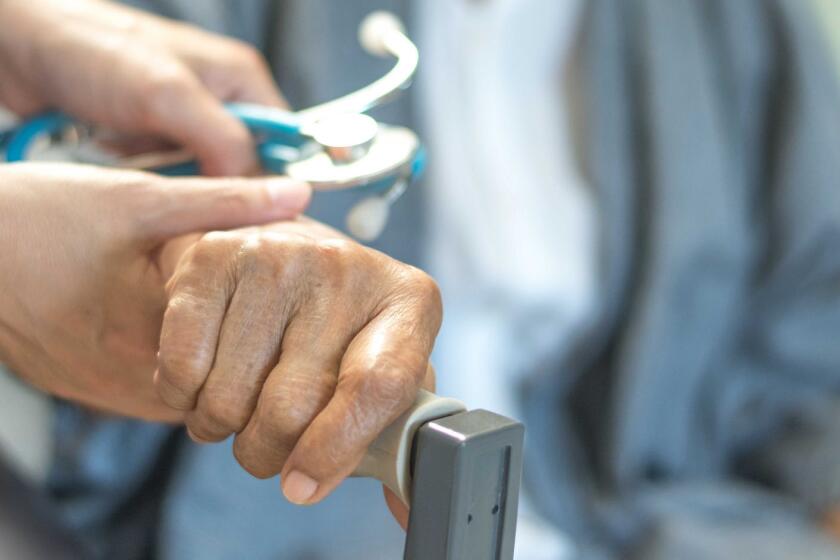San Diego County to restrict COVID-19 testing, citing nationwide supply shortage
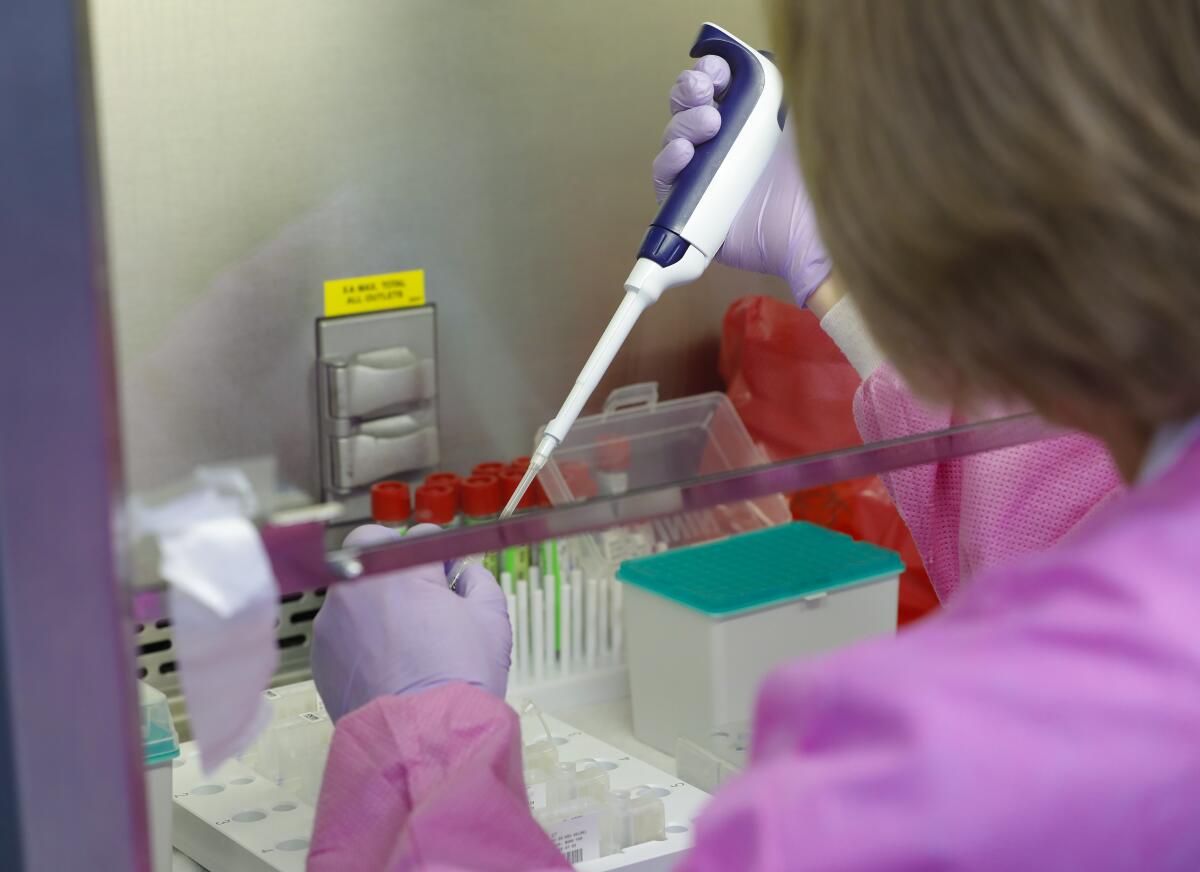
Last-minute deal with local company helps prevent test center closures
News of an 80 percent reduction in critical supplies had San Diego County poised to start closing many of its COVID-19 testing sites Saturday, but a midnight phone call provided a little breathing room.
San Diego County’s public health lab received word Friday that its weekly allotment of test kits from Hologic Inc. would drop from 5,500 to just 1,000 per week, news that sent personnel scrambling for a way to make up the difference.
Nick Macchione, director of the county health and human services agency, said he had resigned himself to sending out closure notices Saturday when his phone rang.
“It was a company here in San Diego that said they could provide about 2,000 tests,” Macchione said. “I can’t express how exciting that was.”
The county plans to announce more about the new testing relationship, including the company’s identity, Monday afternoon.
Though the additional tests should more than make up for those lost due to recent supply constraints, it will not be business as usual for the foreseeable future.
Dozens of drive-through testing locations will remain open, but Macchione, co-chair of the region’s testing, tracing and treatment task force, said the county will stop taking appointments starting Monday for those without symptoms. Going forward, the priority for public health department testing will be people in certain high-risk groups such as health care workers, first responders, those with chronic medical conditions and those living in long-term care facilities will be tested without symptoms.
“Now we are going to have to tighten our belts and make sure we use our resources wisely,” Macchione said. “We need to get testing to those who really need it immediately, versus those that are the worried well.”
While the new source of testing capacity might seem like it should allow the health department to continue testing all comers, Macchione said that the growing number of local cases, and the overall unpredictability of testing supplies nationwide, make it clear that conservation is now required.
“We expect that we are going to have more and more people who fall into those priority groups, and we need to make sure we have the capacity to get them tested as quickly as possible,” Macchione said, adding that the county intends to honor appointments that have already been booked.
Pulling back does not come without a cost.
Testing pretty much everyone in recent weeks has made it possible to spot asymptomatic carriers, those who have the virus but do not show symptoms. To date, nearly 10 percent of the region’s 19,371 confirmed cases were asymptomatic, according to the county. Losing the ability to identify those “silent spreaders” is a blow to the overall effort to contain the spread of the virus in the community.
San Diego County is not alone in its retrenchment but rather is the latest in a series of public health dominoes to fall to the demand of a pandemic that has pressured hospital capacity in many states and now infected more than 3.2 million in America alone.
Los Angeles County announced mid-week that its public health department will operate under a similar set of guidelines that give priority to those deemed to need testing the most. San Bernardino County recently cancelled hundreds of previously-scheduled tests after a decrease in supply deliveries evaporated more than half of its daily testing capacity.
Dr. Omid Bakhtar, a pathologist at Sharp Healthcare and co-chair of the county’s testing task force, noted that health systems, as well as public health departments, are experiencing the effects of supply constraints as demand ramps up in places that have previously not done nearly as much testing as California has.
“You’ve got a thinning of the allotments that you had, because supplies are being diverted to other regions of the country, and in addition to that, the numbers are increasing locally,” Bakhtar said. “Both of those situations are affecting supply.”
Setbacks arrive just as the local testing effort appeared to have hit its stride. Working together, the county, hospital labs and commercial labs have averaged 7,795 test results per day for the past 14 days, more than triple the number routinely returned in late April and early May and eclipsing the state’s benchmark of 6,600 tests daily.
Hospitals
Unlike the county, the health care world has remained focused on testing patients, either people who arrive with symptoms such as persistent fever or shortness of breath, or asymptomatic people, either patients scheduled for invasive procedures or health care workers in high-risk environments such as emergency departments and intensive care units.
While local health care operations do not appear, at the moment, to have suffered the same severe reductions in test supplies that the public health department has, they have clearly not come through unscathed.
Bakhtar, the Sharp pathologist and testing co-chair, said his organization has received reduced supply estimates from manufacturers that have come at the exact wrong time.
“We’ve practically doubled the need for tests and decreased the number of kits that are available to us, which is obviously dangerous,” Bakhtar said.
He said that Sharp, which is able to process about 1,150 tests per day but has a daily demand that fluctuates between 700 and 1,700, is exploring ways to make the number of test kits that it is able to obtain go further, including re-evaluating testing priority and partnership with outside labs.
Johan Otter, the executive vice president responsible for COVID-19 testing at Scripps Health, said that on-hand supplies should be enough to keep testing as required in the near term even as the supply of additional testing materials decreases.
“We’ve been able to create a bank of reserve that we feel comfortable for just our patients at Scripps Health for the next month or two,” Otter said, adding that the swabs used to collect samples are currently the item in shortest supply for Scripps.
Brendan Kremer, chief administrative officer of operations at UC San Diego Health, said that while the organization expects testing supplies to get tighter in the coming weeks, specific reductions in allocations have not yet been provided. In the near term, he said, there remains enough capacity to test patients and staff at current frequencies.
“If either the numbers spike further than they are or the testing gets pulled back from us, then we have plans to adjust that to manage what we can do,” Kremer said.
Hologic
San Diego is home to Hologic’s testing unit, and Michael Watts, the company’s vice president of investor relations and corporate communications, said Friday that the company makes the COVID-19 tests it sells worldwide at its sprawling Miramar campus.
Watts said that soon after the COVID-19 pandemic began, the company quickly designed tests to work with its high-throughput Panther testing machines. Production lines previously dedicated to making other diagnostic kits that run on the Panther platform, he said, were converted to COVID-19 and now can churn out about 1 million kits per week in San Diego production facilities.
However, even with Hologic and its competitors taking drastic steps to ramp up production, demand for testing has grown even more quickly. People outside the world of diagnostic testing, Watts said, simply don’t have the context to grasp the sheer size of the problem. Previously, the most-used type of molecular test in the world was for gonorrhea and chlamydia with about 40 million test kits used per year. The current demand of about 650,000 tests per day, he said, translates to about 20 million COVID-19 tests per month.
“The volume that we’re at right now for COVID-19 is roughly six times the the largest common molecular test out there. That’s truly unprecedented demand,” Watts said.
Hologic, he said, desperately wants to fill every order and is in the process of building additional production capacity at its San Diego campus.
“We are currently investing tens of millions of dollars to produce more,” he said. “We’ve absolutely done everything we can to this point to increase production, but some of the the investments take time.”
Get Essential San Diego, weekday mornings
Get top headlines from the Union-Tribune in your inbox weekday mornings, including top news, local, sports, business, entertainment and opinion.
You may occasionally receive promotional content from the San Diego Union-Tribune.


